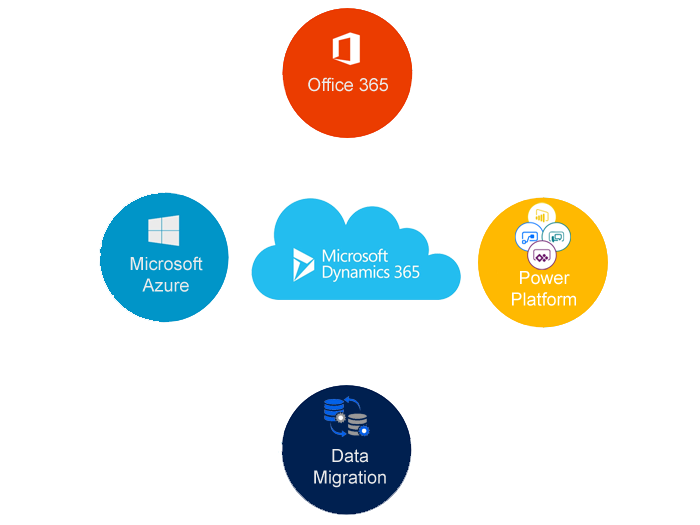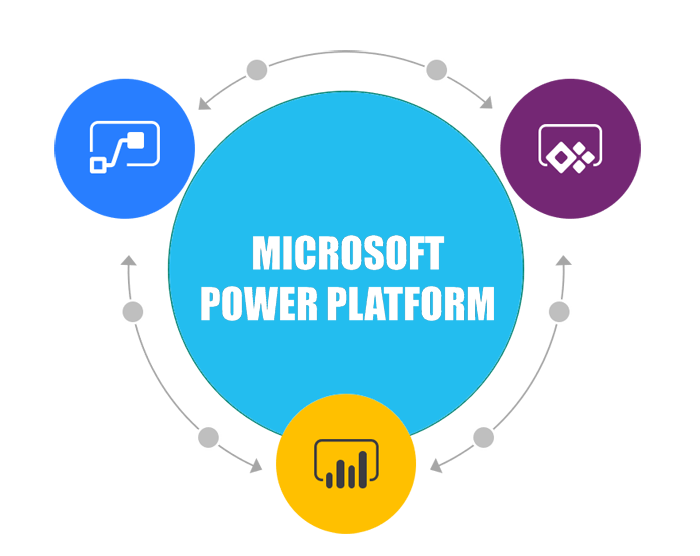Managing Microsoft Dynamics 365 Apps:
-Introduction to App Modules
– App Designer
-Site Map Designer
-Getting more apps from AppSource
-Overview of PowerApps.
Microsoft dynamics 365 integration with Microsoft Outlook.
-Dynamics 365 for Outlook is installed on a compuetr with Outlook.
-Access Dynamics 365 data and features from within Outlook.
-Track emails , appointments, contacts and tasks.
-Use Dynamics 365 email templates
-Work with Dynamics 365 data offline.
Supported Operating Systems:
-32 bit and 64 -bit versions of Windows
– Windows 7 with SP1, 8,8.1 and 10
-Windows Server 2012 and 2012 R2 Remote Desktop Services
Software Components:
-Supported versions of Outlook:
– Office 2010, 2013 and 2016
– The 64 – bit client is only supported on 64 -bit versions of Office.
– Internet Explorer 10 or 11
Other required components might be downloaded and installed during Setup
Deployment Methods:
– Manual Installation.
-Manually using the command line.
-Download link in web application.
-Group Policy.
-Microsoft System Center Configuration Manager.
-Remote Desktop.
-Third party tools for software installation.
Configure Microsoft Dynamics 365 for Outlook:
– Select Dynamics 365
-Enter your user name and password
-Choose the appropriate instance
Configure Microsoft Dynamics 365 for Outlook:
– Select Dynamics 365
-Enter your user name and password
-Choose the appropriate instance
How to install and configure the app for outlook:
– Go to settings > App for Dynamics 365
– Apps for Microsoft Dynamics 365
> Microsoft Dynamics 365 for Outlook click on Download
A pop up will merge
Getting Started with Dynamics 365 for Outlook.
1. Download and install
2.Configure
copy the url
3. Enjoy Dynamics 365 for Outlook
close the pop up..
Navigate into Configuration wizard
> Go to Start
> Click on Microsoft Dynamics 365
> Configuration Wizard
Paste the URL of CRM Online and click next..
After entering the username and password on the popup and then user is configured in the organisation.
Offline Capability:
-Offline capability allows a user to work with Dynamics 365 data
even when disconnected from the network..
-Offline capability can be installed when Dynamics 365 for Outlook is installed or later.
Offline working:
-All processing is performed on the user’s computer.
-Changes to records are stored in a local Microsoft SQL Server Express database.
-When going online, a synchronisation process updates the server database.
To Keep the local database size small, only records specified to be available offline by data filters are available.
-A user can change the offline data filters.
Synchronized Fields:
-Synchronizing items such as emails and appointments between Dynamics 365 and Outlook has been part of
Dynamics 365 from the earliest version.
– No control over which fields were synchronized or the direction.
– Works with Outlook client synchronization and Server Side Synchronization.
Configure synchronized fields:
– To configure synchronized fields navigate to
Settings > Administration > System Settings > Synchronization
– Synchronization can be one-way, two -way or none.
– You cannot add new fields or custom fields to the synchronization settings.
– Applies to Appointment, Contact, Fax, Letter, Phone Call, Recurring Appointment, Service Activity and Task entities.
.
Go to Settings > Administration > System settings > Select the Synchronization tab > Manage fields Link the the below pop up will appear and choose which fields you don’t to be synchronized or Synchronize and one way Synchronize (for example : phone -> Outlook to Dynamics 365)
Microsoft Dynamics 365 App for Outlook
Is a server side installation.
– Performance Improvements
– Support for on-line to on-line; on-premise to
on-premise and hybrid scenarios.
Dynamics 365 App for Outlook
-App commands
-Improved UI
-One click set regarding
-Add Dynamics 365 activities.
Dynamics 365 App for Outlook
– Displaying Dynamics 365 Contacts and Leads
– Displaying Dynamics 365 Users
– Add unknown receipts to Dynamics 365.
– Highlights DL’s
Dynamics 365 App for Outlook:
-Set regarding from pinned or MRU
-Search for a record and set regarding
-Create a record and set regarding
-Display the regarding record summary
-Support custom entities
-Add Dynamics 365 activities.
– Support meeting tracking
– Keep existing Outlook Add-in functionality.
– Add knowledge based arcticles
– Add sales literatures.
– Cool features is
– Add emails templates
Outlook app
– Dynamics 365 — exchange Online
– Microsoft Outlook for Mobile, Mac, All the web access, and even Outlook in Iphones..



